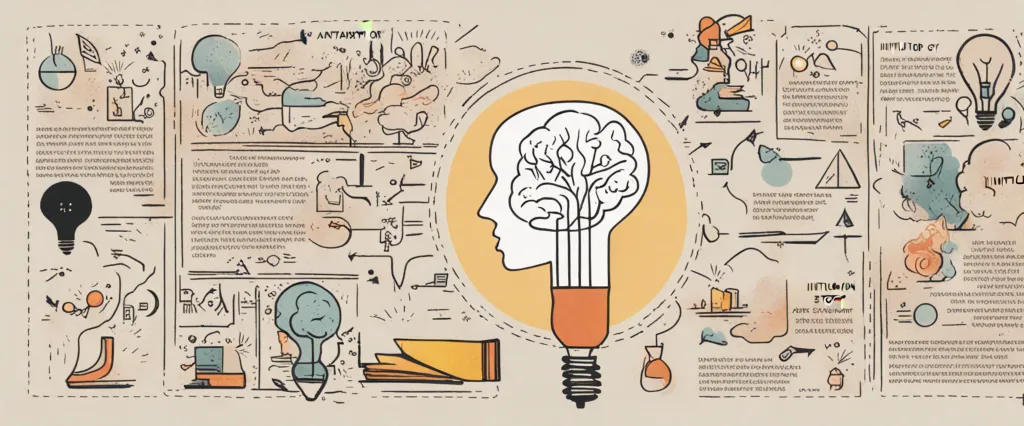
In his groundbreaking work, The Anatomy of Story, renowned screenwriting professor and story consultant, John Truby, dissects the inner workings of storytelling to unveil the fundamental elements that make a narrative compelling and timeless. With over three decades of experience in the industry and having helped countless writers and filmmakers shape their stories into masterpieces, Truby delves deep into the essential principles and techniques that lie at the heart of every great tale. Through his insightful analysis and practical guidance, aspiring storytellers gain the tools necessary to craft narratives that resonate with audiences and stand the test of time.
Chapter 1: The Importance of Story
Chapter 1 of “The Anatomy of Story” by John Truby explores the fundamental importance of storytelling and its lasting impact on human culture. Truby argues that stories are not just a form of entertainment, but rather a vital tool for understanding and navigating the complexities of human existence.
The chapter begins by emphasizing the inherent need for storytelling in people’s lives, claiming that narratives shape our understanding of the world, guide our beliefs and behavior, and provide a means for expressing our deepest desires and fears. Truby asserts that stories have been crucial for survival since ancient times, helping communities transmit knowledge, morals, and cultural values across generations.
Furthermore, Truby highlights the significance of story structure, asserting that a good story must have a central narrative thread that connects all its elements. He introduces the idea of a “story web,” where each detail and character serves a specific purpose in building a cohesive and impactful narrative. This structure, he argues, is essential for creating engaging and emotionally resonant stories.
Additionally, the chapter explores the universal components of stories, such as desire, conflict, and the pursuit of a goal. Truby claims that every story revolves around a protagonist with a strong desire, tackling obstacles and facing conflicts in their quest for achieving their objective. These elements create tension and keep audiences invested in the story’s outcome.
Finally, Truby explains that understanding the underlying principles of storytelling allows writers and storytellers to craft more compelling narratives. By analyzing and dissecting successful stories, they can uncover the key elements that resonate with audiences and apply them to their own work.
In conclusion, Chapter 1 of “The Anatomy of Story” stresses the significance of storytelling, highlighting its role in shaping human culture and emphasizing the importance of structure and universal elements in crafting impactful narratives. This chapter sets the stage for the subsequent exploration of the core principles and techniques of storytelling presented in the rest of the book.
Chapter 2: The Seven Key Steps of Story Structure
Chapter 2: The Seven Key Steps of Story Structure in the book “The Anatomy of Story” by John Truby introduces a comprehensive and practical approach to constructing powerful and engaging stories. Truby asserts that a strong story structure is essential for captivating the audience and evoking emotional responses.
The chapter begins by emphasizing the main goal of storytelling – to create an effect on the audience – and explains that the most effective way to accomplish this is through a well-structured story. Truby introduces his seven key steps of story structure: weak points, Inciting Incident, preliminary self-revelation, progressive complications, crisis, climax, and resolution.
Weak points are the protagonist’s flaws, desires, or problems that need to be addressed throughout the story. The Inciting Incident is an event that disrupts the protagonist’s ordinary world and sets the story in motion. This event should shock or surprise the character, forcing them to take action.
The preliminary self-revelation occurs early on and defines what the protagonist believes they need to do to achieve their desire. It sets the stage for the rest of the story and allows for character growth and transformation. The next step, progressive complications, involves the protagonist facing a series of increasingly difficult obstacles that test their resolve and capabilities.
The crisis is the point in the story where the protagonist reaches their lowest moment, often confronting their weakness or deepest fear. The climax follows the crisis and is the ultimate confrontation between the protagonist and their opposition, determining the outcome of the story. Finally, the resolution provides closure and shows the protagonist’s transformation or new understanding.
Truby emphasizes that these steps should not be viewed as a strict formula, but rather as a guide for crafting a compelling narrative. The author also highlights the importance of creating unique, complex characters and using specific techniques to engage the audience emotionally.
Overall, Chapter 2 of “The Anatomy of Story” establishes the fundamental framework for constructing a powerful story by introducing the seven key steps of story structure, emphasizing the crucial role of character development, and highlighting the significance of emotional engagement.
Chapter 3: Creating Characters with Depth
Chapter 3: Creating Characters with Depth from John Truby’s book, The Anatomy of Story, explores the key elements involved in developing deep and complex characters within a story. Truby argues that creating well-rounded characters is essential for engaging the audience and driving the narrative forward.
The chapter begins by emphasizing that a character’s desire is the foundation of their depth. Truby suggests that a character’s goal should be not just a physical want or need but instead a deeply embedded desire that reflects their identity and yearning. By establishing this central desire, the author lays the groundwork for a character with depth.
Truby then introduces the idea of weaknesses and shows how they create internal conflict within characters. These weaknesses need to be related to the character’s desire and serve as an obstacle that they must overcome. This combination of desire and weakness creates a dynamic tension within the character, further adding to their depth.
The author also discusses the importance of using moral weaknesses to challenge the character’s growth throughout the story. Characters need to confront and overcome their moral shortcomings, leading to a transformation or change in their values.
Furthermore, Truby explores the significance of introducing both psychological and moral needs within a character. These needs can often contradict each other and can lead to internal conflicts, making the character’s journey more complex and compelling.
Additionally, the chapter highlights the role of the character’s self-revelation, which refers to the moment when they realize their true identity or potential. This realization often occurs near the climax of the story, and it is crucial for the character’s development and growth.
In summary, Chapter 3 guides writers in crafting characters with depth by establishing a central desire, incorporating weaknesses, exploring moral conflicts, and focusing on self-revelation. By incorporating these elements into character development, authors can create compelling and multidimensional protagonists that captivate audiences and drive the story forward.
Chapter 4: Building Conflict and Tension

Chapter 4 of “The Anatomy of Story” by John Truby focuses on the essential elements and techniques in building conflict and tension within a narrative. Truby argues that conflict is the lifeblood of any story, driving the plot and keeping the audience engaged.
The chapter begins by explaining that conflict arises from the interaction between a character’s desire and the forces opposing that desire. Truby emphasizes the importance of a strong, active protagonist who actively pursues their goal, encountering obstacles and adversaries along the way. He defines various types of conflict, including basic conflict (between characters or forces), inner conflict (within a character’s mind or heart), and complex conflict (blended conflicts that create more layers and depth to the story).
Truby introduces the concept of “grounds” as the underlying factors that influence a character’s choices, motivations, and actions. The grounds consist of a character’s psychological, moral, and practical attributes, which shape their worldview and drive them towards their objective. Understanding a character’s grounds allows the writer to craft meaningful conflict that pushes the protagonist to their limits.
To build tension, Truby suggests the use of reversals and surprises. Reversals occur when a situation suddenly changes, often challenging the protagonist’s progress. Surprises, on the other hand, are unexpected events that create uncertainty and keep the audience engaged. Truby highlights the importance of placing these elements strategically throughout the story to maintain constant tension.
Additionally, Truby introduces the idea of creating empathy for characters on both sides of a conflict, preventing a one-dimensional portrayal of good versus evil. By understanding the motives and perspectives of all characters involved, the conflict becomes more complex and engaging.
In summary, Chapter 4 of “The Anatomy of Story” explores the significance of conflict and tension in storytelling. It highlights the different types of conflict, the importance of a strong protagonist, and the utilization of reversals and surprises. By understanding a character’s grounds, creating empathy, and skillfully managing tension, writers can construct compelling narratives that captivate readers or viewers.
Chapter 5: The Importance of Premise and Designing Worldviews
Chapter 5 of “The Anatomy of Story” by John Truby explores the significance of premise and designing worldviews in the storytelling process. Truby emphasizes that a powerful premise serves as the foundation of any captivating story, enabling writers to craft a unique and compelling narrative.
Truby begins by defining the premise as the underlying idea of a story, the core concept that drives the plot and character actions. A well-developed premise not only captures the audience’s attention but also guides the writer in constructing a coherent and impactful story.
The author highlights that a premise should possess two key elements: an external and an internal problem. The external problem refers to the visible conflict or challenge faced by the protagonist, while the internal problem corresponds to the protagonist’s flaws or emotional struggles. Truby stresses the importance of intertwining these two elements to create a deeper and more resonant story.
Designing worldviews, according to Truby, involves constructing the story’s setting, characters, and rules that govern the narrative. He emphasizes that an effective worldview is distinct and innovative, capturing the reader’s imagination and making the story memorable.
Furthermore, Truby explores how worldviews contribute to the thematic exploration of a story. By designing a unique and consistent worldview, writers can delve into deeper themes and explore different aspects of the human experience.
In conclusion, Chapter 5 of “The Anatomy of Story” underscores the significance of premise and designing worldviews in storytelling. A compelling premise drives the plot and characters, while a well-crafted worldview adds depth and enriches the overall narrative. Truby’s insights offer a valuable guide for writers seeking to create engaging and impactful stories.
Chapter 6: Crafting Scenes and Sequences
Chapter 6: Crafting Scenes and Sequences of “The Anatomy of Story” by John Truby focuses on the importance of crafting effective scenes and sequences to create a compelling narrative.
Truby starts by emphasizing that scenes are the building blocks of a story, and their sequence is what drives the plot forward. He highlights the significance of understanding the relationship between setup, conflict, and resolution in each scene. A well-crafted scene should have a clear purpose in advancing the story, introducing conflict, and generating tension.
The chapter then delves into the concept of the Master Scene, which functions as the primary driving force in a sequence. Truby explains that a Master Scene works to establish the main goal, conflict, and resolution that will drive subsequent scenes. It lays the foundation for future events, ensuring continuity and logical progression throughout the story.
Truby also explores the different types of scenes and sequences that can be used in storytelling. He provides examples of the mini-plot sequence, goal sequence, self-revelation sequence, change of fortune sequence, and climax sequence, among others. Understanding these sequences allows a writer to craft a well-rounded and engaging narrative.
Furthermore, Truby emphasizes the importance of the placement and ordering of scenes. He highlights the impact of switching between multiple plots, main and subplot integration, and the effective use of surprise and suspense to maintain audience interest.
In summary, Chapter 6 of “The Anatomy of Story” explores the fundamental elements of crafting scenes and sequences that drive a compelling narrative. Truby highlights the importance of purpose, conflict, and resolution within each scene, and the role of the Master Scene in generating continuity. By understanding the different types of sequences and employing effective placement and ordering techniques, writers can create engaging stories that captivate their audience.
Chapter 7: Developing Theme and Symbolism
Chapter 7 of “The Anatomy of Story” by John Truby explores the process of developing theme and symbolism in storytelling. Truby emphasizes the importance of theme as the central idea or message that the author wants to convey to the audience.
Truby begins by emphasizing that a theme must be universal, timeless, and rooted in human nature to resonate with the audience. He highlights that a powerful theme often emerges from the central conflict in the story and the transformation of the main character. Themes can be explored through various narrative devices such as dialogue, imagery, and character actions.
Moreover, Truby delves into the concept of symbolism and its crucial role in storytelling. Symbolism represents an object, person, or event that carries a deeper meaning beyond its literal interpretation. It helps to communicate themes indirectly and adds depth and complexity to the story. Truby suggests that effective use of symbolism involves introducing symbols early in the story, recurring motifs, and the creation of a symbolic pattern.
In this chapter, Truby explains how symbolism and theme are interconnected. He encourages writers to select symbols that reflect the central theme, as they can evoke emotional responses from the audience and reinforce the story’s underlying message. The author also emphasizes that symbolism should be integrated naturally into the narrative, avoiding heavy-handed or forced symbolism.
Overall, Chapter 7 of “The Anatomy of Story” serves as a guide for writers to develop powerful themes and symbolism. Truby emphasizes the significance of infusing universal themes and symbols into a story to create a deeper impact on the reader and enhance the overall storytelling experience.

Chapter 8: The Art of Rewriting and Polishing
Chapter 8 of “The Anatomy of Story” by John Truby explores the essential process of rewriting and polishing a story. Truby begins by emphasizing the significance of rewriting, as it is during this stage that the true potential of a story begins to emerge.
The chapter starts by discussing the importance of objectivity and detachment for successful rewriting. Truby argues that many writers become too attached to their initial drafts, which can prevent them from making necessary changes to improve their story. He emphasizes the need to approach the rewriting process with fresh perspective and a critical eye.
Truby also introduces several key principles to guide the rewriting process. He highlights the importance of transformation, both in terms of the characters and the story itself. He advises writers to consider how to deepen and complicate their characters, as well as how to evolve the central conflict and theme as the story progresses.
The chapter further delves into the concept of unity, emphasizing the need for all elements of the story to work cohesively together. Truby explains that the rewriting process should focus on refining the structure, pacing, dialogue, and symbolism, among other elements, in order to create a unified and coherent narrative.
Additionally, Truby explores the role of genre in rewriting, suggesting that writers should pay close attention to the conventions and expectations of their chosen genre. While there is room for innovation, Truby advises against deviating too far from the genre’s conventions, as this can alienate the audience.
Overall, Chapter 8 of “The Anatomy of Story” provides writers with a comprehensive understanding of the rewriting and polishing process. It emphasizes the importance of objectivity, transformation, unity, and genre conventions, equipping writers with the necessary tools to refine their stories and bring out their full potential.
After Reading
In conclusion, “The Anatomy of Story” by John Truby is a comprehensive and insightful guide to the art of storytelling. Truby’s book explores various elements such as plot, character, theme, and structure, providing clear explanations and practical advice for aspiring writers. By analyzing numerous examples from both film and literature, Truby demonstrates how these elements come together to create a compelling narrative. The book’s emphasis on understanding the underlying principles of storytelling rather than relying on formulaic approaches sets it apart. Overall, “The Anatomy of Story” equips writers with a solid foundation and valuable tools to craft engaging and meaningful stories.
1. The Alchemist” by Paulo Coelho
This captivating novel provides a thought-provoking journey of self-discovery and purpose. It follows the story of a young shepherd named Santiago who embarks on an adventure to find his personal legend. Coelho’s powerful storytelling and philosophical insights make this book a must-read for those seeking inspiration and a deeper understanding of life’s true meaning.
2. “To Kill a Mockingbird” by Harper Lee
Set in the 1930s American South, this Pulitzer Prize-winning novel explores themes of racial inequality, justice, and the loss of innocence. Through the eyes of young Scout Finch, readers witness her father, Atticus, defending an African American man accused of rape in a deeply divided society. Harper Lee’s classic work raises profound questions about morality and compassion and remains a poignant and relevant read to this day.
3. Sapiens: A Brief History of Humankind” by Yuval Noah Harari
In this compelling non-fiction book, Harari takes readers on a journey through the history of our species, from the emergence of Homo sapiens to the present day. With a refreshing perspective, he offers insights into how humans have evolved and shaped the world around us. Harari’s thought-provoking analysis blends science, anthropology, and history, making this book a captivating exploration of humanity’s remarkable journey.
4. Pride and Prejudice” by Jane Austen
Regarded as one of the greatest works of English literature, Austen’s novel follows the witty and independent Elizabeth Bennet as she navigates social dynamics, love, and marriage in early 19th-century England. Through her enchanting storytelling, Austen masterfully explores themes of class, gender, and societal expectations, while providing a vivid portrayal of the era. “Pride and Prejudice” remains a timeless classic that delights readers with its clever dialogue and unforgettable characters.
5. The Power of Now” by Eckhart Tolle
In this transformative self-help book, Tolle explores the concept of living in the present moment and finding inner peace. Drawing from his own spiritual experiences, he guides readers towards transcending their ego-driven minds and embracing profound consciousness. Tolle’s teachings, which blend elements of mindfulness, psychology, and eastern philosophy, offer practical insights to overcome anxiety and stress, making “The Power of Now” a powerful read for personal growth and spiritual awakening.



